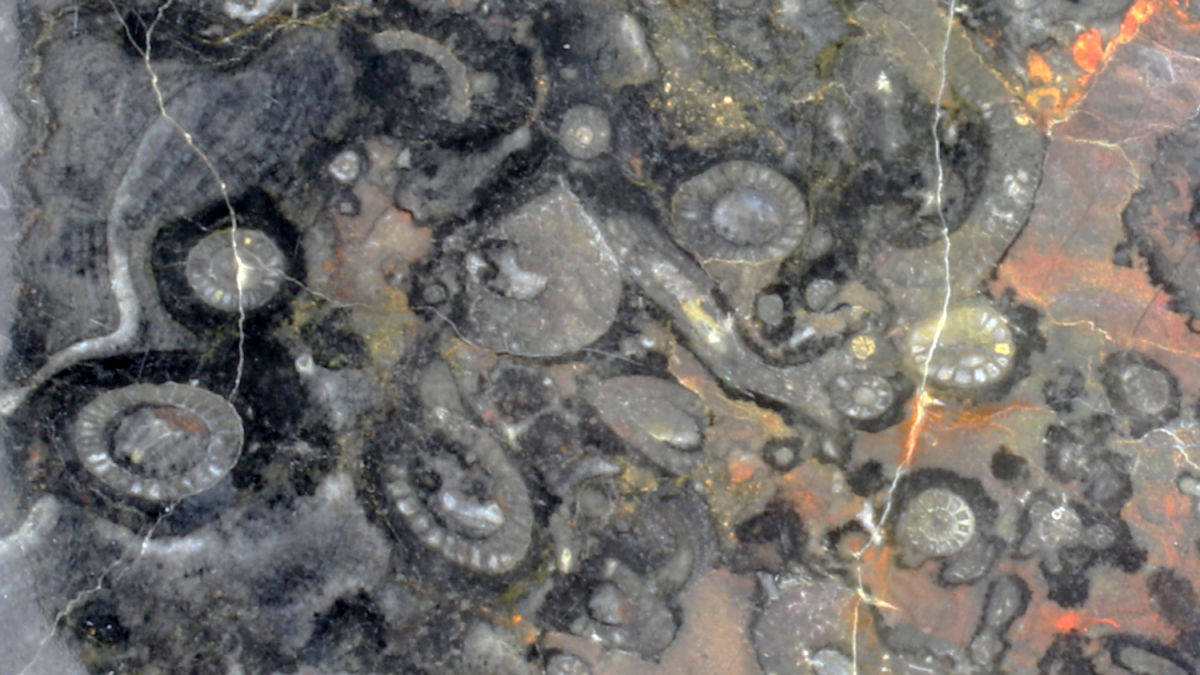Chapter contents:
Porifera
–– 1. Archaeocyatha ←
–– 2. Stromatoporoidea
–– 3. Demospongiae
–– 4. Hexactinellida
–– 5. Calcarea
–– 6. Homoscleromorpha
3D models of Archaeocyatha can be found here!
Above Image: Polished archaeocyath fossils from the collections of the Paleontological Research Institution in Ithaca, NY. Image by Jaleigh Q. Pier is licensed under a Creative Commons Attribution-ShareAlike 4.0 International License.
Archaeocyatha Snapshot:
- Ecology: marine
- Key features of group: vase-shaped reef builders
- Diversity: 649 sp.
- Fossil record: Cambrian
Overview
Archaeocyatha is currently treated as an extinct class within Porifera, although this classification was greatly debated in the past. At one time or another they have been considered part of foraminifera, algae, colonial protozoans, sponges, corals, or even as their own phylum altogether. However, the current consensus has classified them as sponges, which is why we are including them in this chapter.
Archaeocyath fossils have massive, double-walled, calcareous skeletons that are vase-like in shape. In cross-section, they look like a small circle (inner wall) nested within a larger circle (outer wall); in turn, these circles are separated by divisions (septa) that look like the spokes of a bike. Archaeocyaths also lack evidence of having had spicules, which is one reason why their affiliation with sponges has been questioned. Their simple body plan is thought to most closely resemble early demosponges and is even similar to a few modern sponges from deep cave environments. Although not all archaeocyath fossils are associated with reefs, many of them grew in such close association that they are often referred to as the first major reef building organisms.
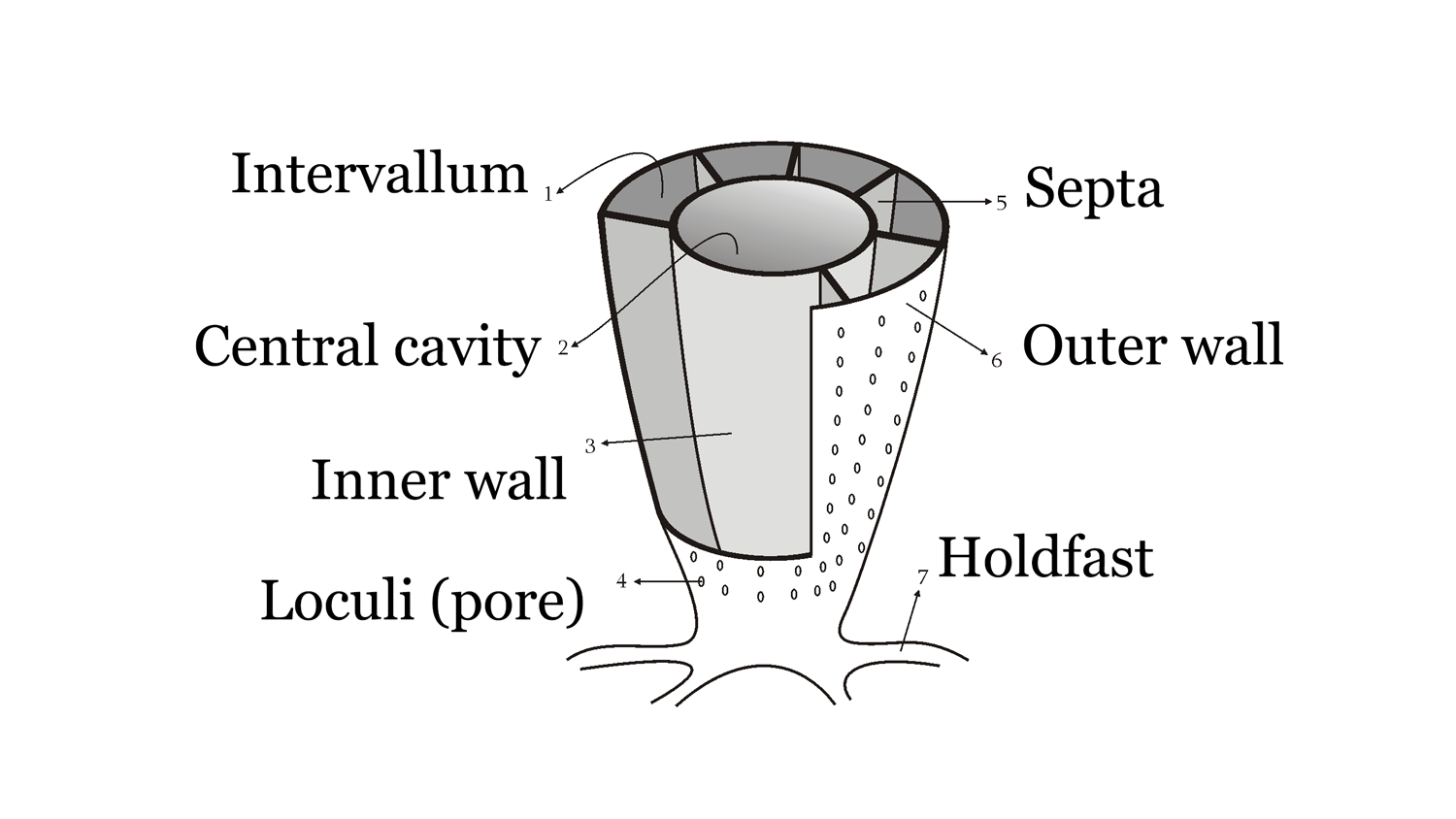
Archaeocyath morphology. Image by Muriel Gottrop, (Wikimedia Commons; Creative Commons CC0 1.0, 2.5, and 3.0 Universal Public Domain Dedication). Modified by Jaleigh Q. Pier.
Reef Builders
The first global reef-building event for any animal group was accomplished by the archaecyaths over the course of their brief 10–15 million year existence from the Early to Middle Cambrian (~530-520 million years ago). This brief appearance makes them ideal index fossils for identifying Cambrian-aged rocks: if you come across an archaeocyath fossil you will immediately know that the rocks you are looking at are Cambrian in age. Archaeocyaths seem to be commonly associated with stromatolites (layered calcareous mounds formed by calcite secreting cyanobacteria), indicating an affinity for warm, shallow seas. Having a reef-like construction allowed other organisms to flourish off of the structure they built, creating ancient hotspots of biodiversity.
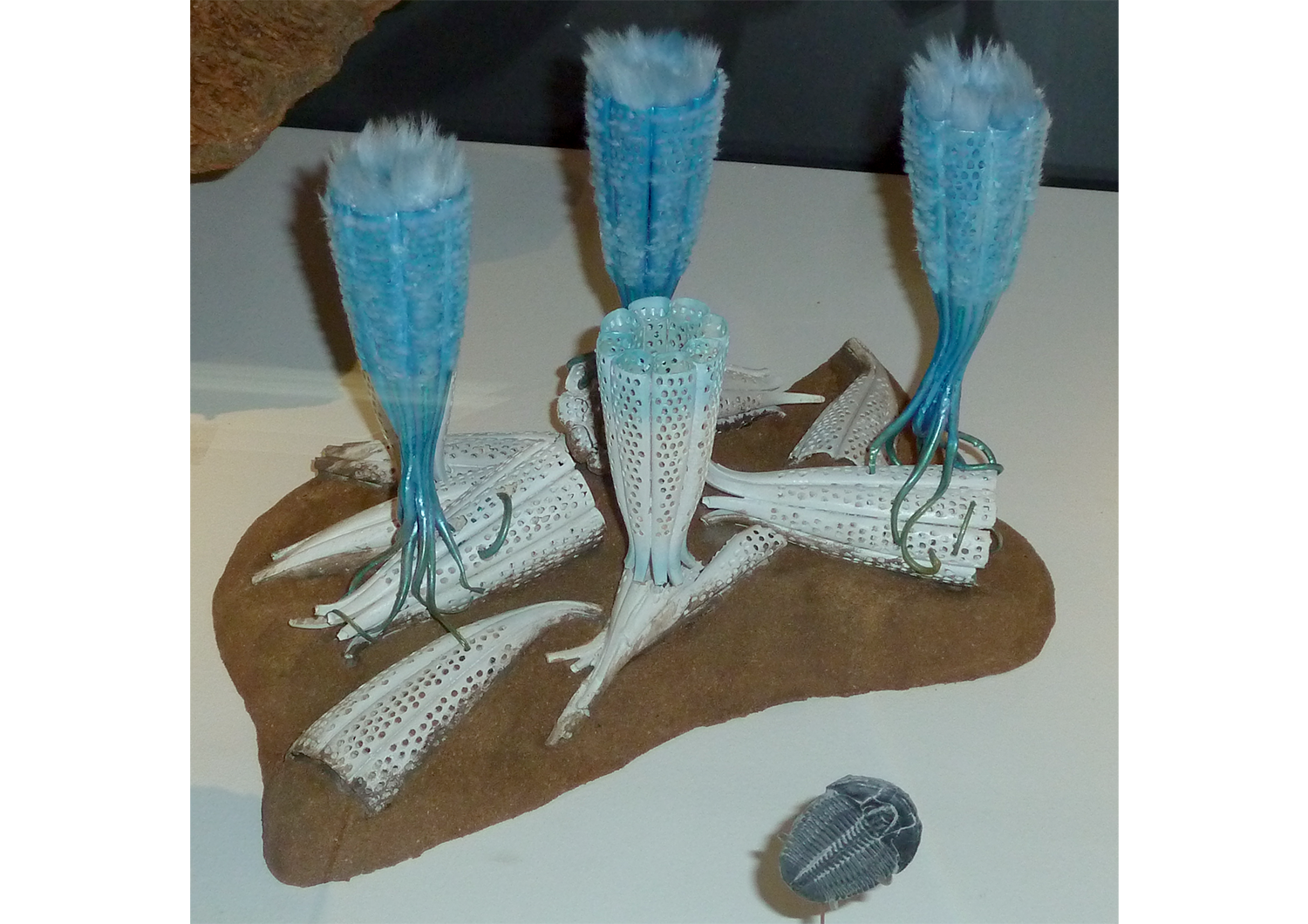
Models of archaeocyaths on display at the Melbourne Museum, Australia. Image by Jonathan R. Hendricks is licensed under a Creative Commons Attribution-ShareAlike 4.0 International License.
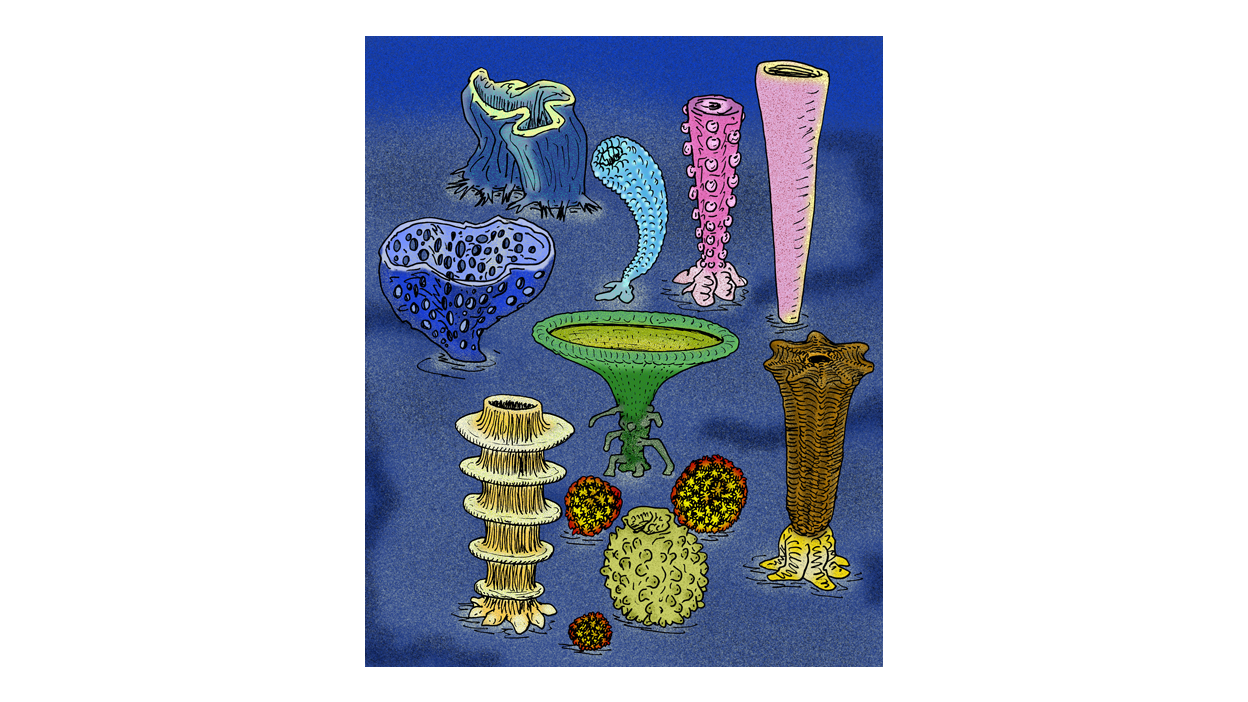
Diversity of archaeocyath forms. Image by Stanton F. Fink, (Wikimedia Commons; Creative Commons CC0 2.5 and 3.0 Universal Public Domain Dedication).
Diversity of Archaeocyatha
Archaeocyaths are diverse in their internal structures, which are important to study in order to properly identify species and to differentiate similar groups. Thin sections are typically necessary to observe these internal structures. Both transverse sections (cut horizontally through the fossil) and longitudinal sections (cut vertically through the fossil) help provide important information on the structure and function of archaeocyaths. Sometimes tangential sections, cut diagonally through the fossil, can also be used.
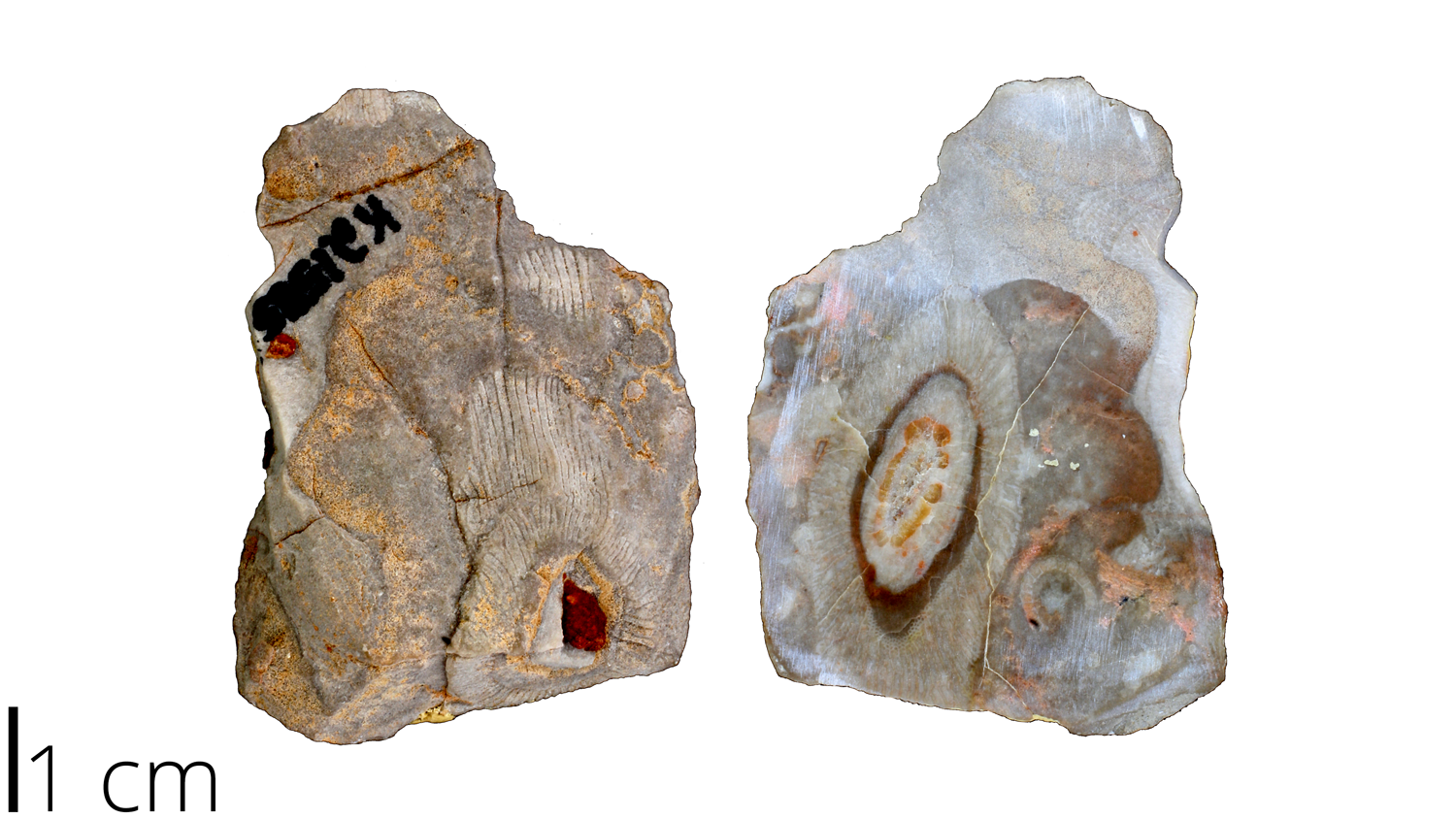
Archaeocyath fossil with a diagonal (tangential) cut. Specimen from the Paleontological Research Institution, Ithaca NY. Image by Jaleigh Q. Pier is licensed under a Creative Commons Attribution-ShareAlike 4.0 International License.
Previously, Archaeocyatha had been divided into two groups based on whether their structure was orderly, or not: Irregulares and Regulares. Regulares included those with an organized and orderly structure of the septa, whereas Irregulares did not. The archaeocyaths below are examples of Regulares.
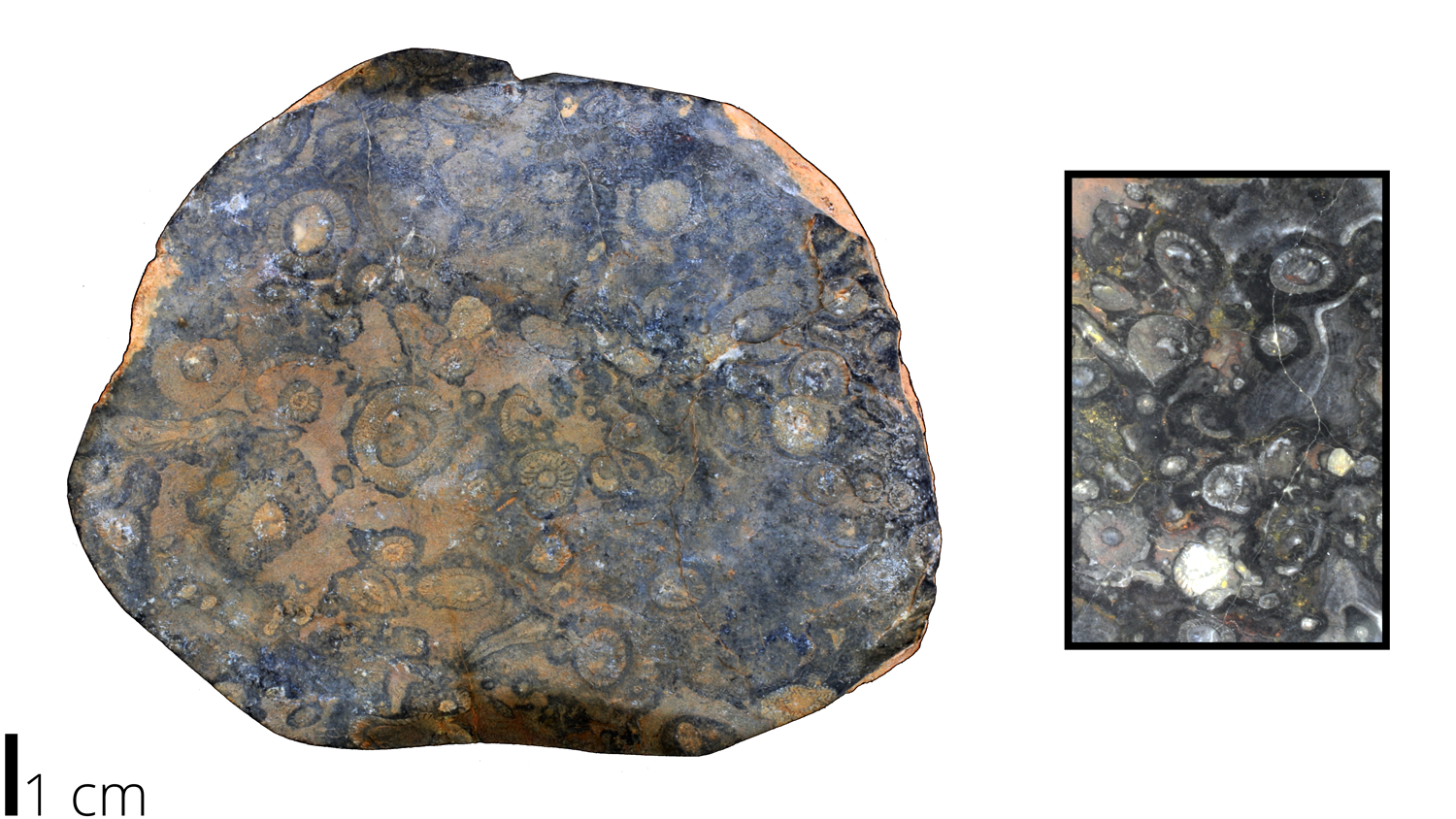
Left: Unpolished Cambrian rock with archaeocyath fossils. Right: Polished archaeocyath fossils. Specimen from the collections at the Paleontological Research Institution. Image by Jaleigh Q. Pier is licensed under a Creative Commons Attribution-ShareAlike 4.0 International License.
Although Archaeocyatha had a very short-lived existence, they were certainly impactful being the first reef builders and therefore an important part of the fossil record.

Archaeocyath fossils (T-229) from the teaching collection of the Paleontological Research Institution in Ithaca, NY. Image by Jaleigh Q. Pier is licensed under a Creative Commons Attribution-ShareAlike 4.0 International License.
Fossil specimen of an archaeocyath from the Lower Cambrian. Specimen is from the teaching collections of the Paleontological Research Institution, Ithaca, New York (PRI T-229). Model by Jonathan Hendricks.
References and further reading:
Archaeocyatha – A knowledge base. http://archaeocyatha.infosyslab.fr/
Boardman, R.S., Cheetham, A.H., and Rowell, A.J. 1987. Fossil Invertebrates. Blackwell Scientific Publications. 713 pp.
Botting, J.P, and Muir, L.A. 2018. Early sponge evolution: A review and phylogenetic framework. Palaeoworld: 27, pp. 1-29.
Debrenne, F. 2007. Lower Cambrian archaeocyathan bioconstructions. General Palaeontology (Palaeoecology): 6, pp. 5-19.
Holland, C. H. & Sturt, B. A. 1970. On the occurrence of Archaeocyathids in the Caledonian metamorphic rocks of Sørøy, and their stratigraphical significance. Norsk Geologisk Tidsskrift, Vol. 50, pp. 341-355.
Kerner, A., Debrenne, F., and Vignes-Lebbe, R. 2011. Cambrian archaeocyathan metazoans: revisions of morphological characters and standardization of genus descriptions to establish an online identification tool. Zookeys: 150, pp. 381-395.
Kerner A., Vignes-Lebbe R. & Debrenne F. 2011. Computer-aided identification of the Archaeocyatha genera. Carnets de Géologie / Notebooks on Geology, Brest, Letter 2011/02 (CG2011_L02), p. 99-102
Kerner, A. 2012. Archaeocyatha, a computer-aided identification of genera. Geologica Belgica, 15, 4, p. 209-214.
Rowland, S.M. 2001. Archaeocyaths – A history of phylogenetic interpretation. Journal of Paleontology: 75(6), pp. 1065-1078.
Usage

Unless otherwise indicated, the written and visual content on this page is licensed under a Creative Commons Attribution-NonCommercial-ShareAlike 4.0 International License. This page was written by Jaleigh Q. Pier. See captions of individual images for attributions. See original source material for licenses associated with video and/or 3D model content.



